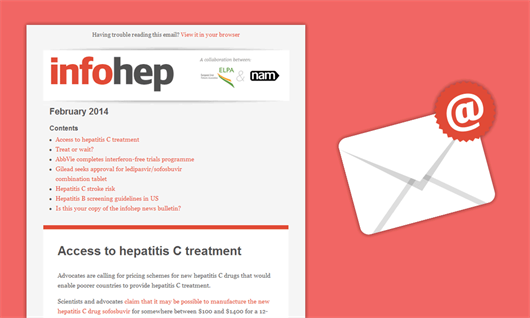Current antiviral treatment for hepatitis B (nucleoside and nucleotide analogues, given as tablets) cannot usually cure the infection. Therefore, treatment must be taken for many years or even for life once it has been started. The aim of antiviral treatment is to stop viral replication so as to prevent liver damage. In a small minority of people antiviral treatment succeeds in achieving a functional cure, indicated by hepatitis B surface antigen (HBsAg) clearance.
Antiviral treatment is usually based on one drug, either tenofovir or entecavir. A newer version of tenofovir called TAF carries a lower risk of kidney toxicity and bone mineral loss and may be offered to some people.
Hepatitis B is considered very hard to cure in comparison to hepatitis C because the hepatitis B virus (HBV) inserts its DNA into the nucleus of liver cells. This is called cccDNA and is very stable. Antiviral drugs cannot eliminate this DNA and if treatment is stopped too soon, new hepatitis B viruses may be produced and infect other cells, leading to a rapid increase in HBV viral load.
New experimental treatments for hepatitis B are being developed with the hope that they can achieve a functional cure, defined as no HBsAg in the absence of antiviral treatment, and development of HBsAg antibodies.
Trials of three experimental drugs with new mechanisms of action against HBV were presented at the AASLD Liver Meeting in Washington, DC in October.
Montreal-based Replicor is developing nucleic acid polymers (NAPs) that interfere with assembly and release of HBV subviral particles from infected liver cells, which make up most of the HBsAg in the blood. Lower HBsAg levels lead to stronger immune responses and enhance the activity of immune-based therapy such as interferon.
A trial compared weekly intravenous infusions of two alternative NAPs, in combination with daily tenofovir treatment and weekly pegylated interferon treatment, to tenofovir plus weekly pegylated interferon, in 40 men with previously untreated chronic hepatitis B. Fourteen out of 20 who received the experimental treatment experienced a drop in HBsAg below the limit of detection by the end of treatment and 13 out of 20 maintained control of HBV for between 4 and 24 weeks after stopping treatment. Further follow-up will be needed to determine how long the effect of treatment lasts in those who achieved functional control.
Another drug which interferes with HBV assembly, in this case of the viral shell or capsid, JNJ-379, is being developed by Janssen, a Johnson & Johnson company. A phase 1b trial evaluating dosing and safety of JNJ-379, tested the drug in 24 people with 'e'-negative chronic hepatitis B infection. The 75mg dose of JNJ-379 produced a "more pronounced and consistent" decline in HBV DNA, the researchers reported. Based on the good safety profile so far, the researchers will evaluate higher doses of JNJ-379 in studies in Europe and Asia.
Another new agent uses RNA interference to stop HBV replication. RNA interference is a process by which molecules bind to viral RNA and stop the production of proteins required to create new virus particles. ARB-1467, being developed by Arbutus Biopharma, was tested in 36 people in a phase 2 trial. All participants were already receiving tenofovir or entecavir and about half had undetectable HBV DNA. ARB-1467 was given by monthly or biweekly infusion.
Everyone treated with ARB-1467 saw a reduction in HBsAg from baseline. People who received the drug biweekly had larger HBsAg declines than those who received once-monthly infusions, and the 0.4 mg/kg dose worked better than the 0.2 mg/kg dose.
The researchers concluded that monthly dosing does not appear to be sufficient to maintain or improve initial HBsAg reductions achieved with biweekly administration, and suggested that combination therapy with other therapies and longer treatment duration may be needed for a functional cure of hepatitis B.
A forthcoming trial will evaluate ARB-1467 in combination with tenofovir and pegylated interferon, according to an Arbutus press release.
Finally, Spring Bank Pharmaceuticals reported on inarigivir soproxil, an immune modulator which controls HBV by two mechanisms: by stimulating human interferon production to improve immune responses to HBV, and by interfering with viral replication through disruption of viral packaging and reverse transcription (copying).
Early results of a phase 2 study testing inarigivir soproxil followed by tenofovir were reported. The study was placebo-controlled. HBV DNA fell more during inarigivir monotherapy in HBeAg-negative compared with HBeAg-positive people. In the HBeAg-negative group, viral load decreased by a mean -0.86 log10 at 12 weeks and -3.96 log10 at 24 weeks. In the HBeAg-positive group, the corresponding reductions were -0.37 log10 and -4.48 log10. Three HBeAg-negative people saw a sustained reduction in HBsAg levels of more than -0.5 log10.
Researchers plan to study initial combination therapy using both inarigivir and tenofovir alafenamide, Gilead Science's new, better-tolerated version of the drug.



Connect with infohep on Facebook: Keep up to date with all the latest news and developments.
Follow infohep on Twitter for links to news stories and updates from infohep.org. Follow us at www.twitter.com/infohep.
Follow all the infohep news by subscribing to our RSS feeds.